An ineffective tool?
While we all enjoy European league’s summer break, watching some Copa América or Women’s World Cup, let us talk about the everyman’s strategy in football.
If you cannot break through an opposing defence why not just play the ball down the flank and cross it into the middle? It seems like an easy strategy at first glance. However, after years of statistically analysing football, it should be common sense that knocking the ball into the box is not the most effective way of using ball possession in the opposing half. But here is the deal: It only needs to work once or twice in a match for it to be deemed profitable, while being an easily realisable tactic. Just throw all the advantages of effectively exploiting ball possession and attacking opportunities out of the window.
Particularly in England, one could have the feeling cross passes are something worth striving for. Crossing is seen as a counter to the opposition parking the bus – a cornerstone of English football thinking. Note: High and intense pressing is not common in Premier League or in Italy’s Serie A. Players and spectators often describe the English way of football as very intense and fatiguing. A usual Premier League clash goes back and forth. Of course, continual attacking runs down the flanks, where the opposing is not defending as strongly as in the centre of the pitch, accelerate the game.
However, we sometimes watch matches like when Manchester United drew with Fulham on February 9, 2014, crossing the ball 82 times. The input was high, the outcome extremely little. And remember, every inaccurate cross means the team loses the ball, even if it hurtles through the six yard box, while all target players standing five yards deeper.
Don’t get me wrong. There are great full-backs and wingers like Atlético’s Juanfran or the legendary Ricardo Quaresma, who can play accurate cross passes in a constant manner. Or a team can utilise cross passes to shift the balance of an attacking play instead of putting the ball in the box for the purpose of forcing strikers in cheerless air duels.
As for this article, I have looked at various numbers of the last season in Europe’s leading leagues – Premier League, Bundesliga, La Liga, and Serie A. We can clearly see the Bundesliga is the exception to the rule. Germany’s primary football competition displayed the highest crossing accuracy, the lowest amount of open crosses, and the lowest percentage of goals that were scored via open crosses. Seemingly, La Liga and Serie A outnumbered the Premier League, while the English teams nevertheless scored more goals directly from open crosses.
Only 13 percent of all Bundesliga goals stemmed directly from a cross, while the average Bundesliga team needed 80.24 crosses for scoring a single goal. A Premier League side needed 67.46. Overall, teams in big four leagues required 71.97 open crosses per goal on average. Another aspect we have already known is that only 20 percent of all key passes via open crosses have led to goals. (By the way, Hamburger SV played 453 crosses last season, leading to 65 shot attempts, converting only one. That can be considered waste of ball possession.) In contrast, 45 percent of all key passes via through balls have created successful goal scoring attempts. Of course, there are problems with measuring crosses or through balls that lead indirectly to goals.
Interestingly, not every team that sees much of the ball in the opposition half crosses more than sides with less ball possession. For instance, Bayer Leverkusen (top left) played only 13.29 crosses per game, despite 32 percent of their actions happened in the opponent’s half. With 26.89 crosses per game Internazionale had the highest amount of crosses last season, while Borussia M’Gladbach had the lowest with 11.29.
Some could urge an argument that crossing the ball generates more shots in the penalty area than trying to pass the defence line by playing short passes or risky through balls. Again, let us look at the numbers. There is no distinct correlation between the percentage of shots taken in the penalty area and the number of open crosses. Regarding the shots taken inside the six yard box, the correlation seems slightly more significant, considering that a team, which has more shot attempts inside the tiny six yard area, mostly is a dominant one that, besides other tools, uses cross passes. Bayern Munich had 16.5 crosses per game last season, Barcelona produced 20.37 in La Liga.
However, the number of open crosses played per game has barely any effect on the shots taken inside the penalty area. It is the challenge of constantly crossing the ball accurately what could make this strategy worthwhile.
The same goes for the correlation between crossing und the shot conversion inside the penalty area. Looking only at the Premier League numbers, we have the case that teams with a higher frequency of crossing have even a lower conversion rate inside the penalty area as well as inside the six yard box.
I finish with a quote from Liverpool’s legendary left-half Bob Paisley: “It’s not about the long ball or the short ball; it’s about the right ball.” That is what we have to keep in mind. Intriguingly, the numbers do not give us the evidence that crossing is principally an ineffective way to approach the question of how we can create goal scoring opportunities – but it can be an ineffective way in certain cases.


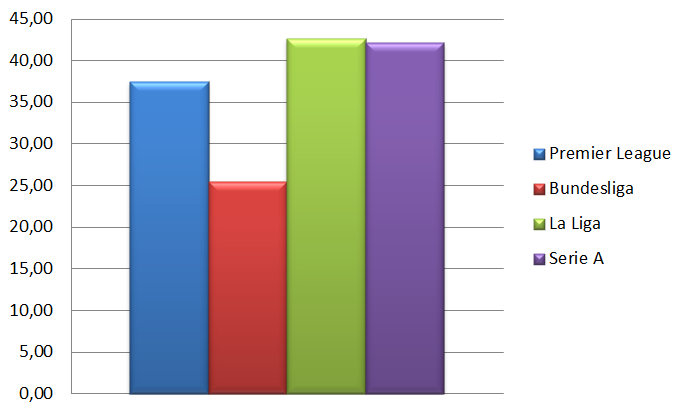
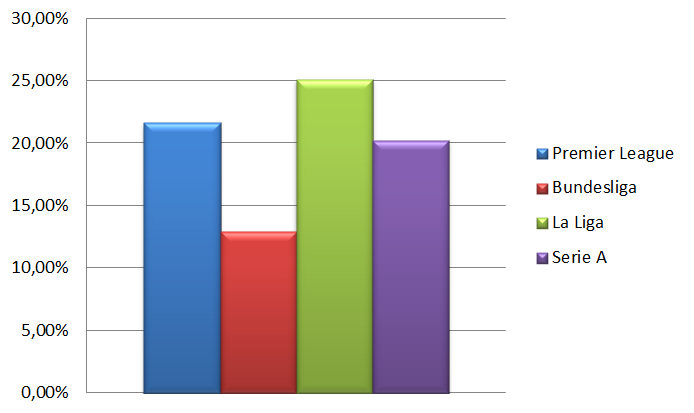
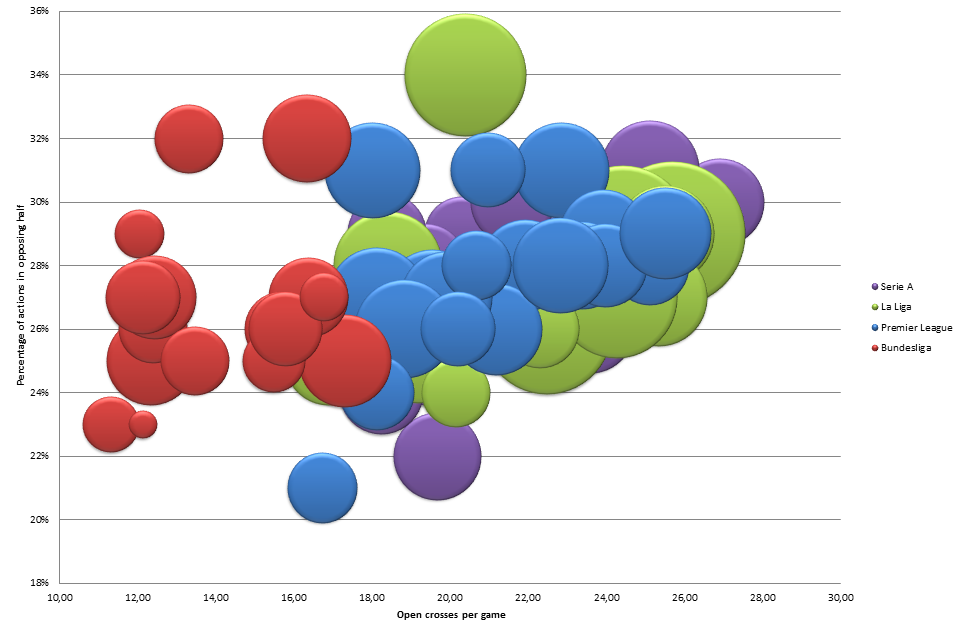
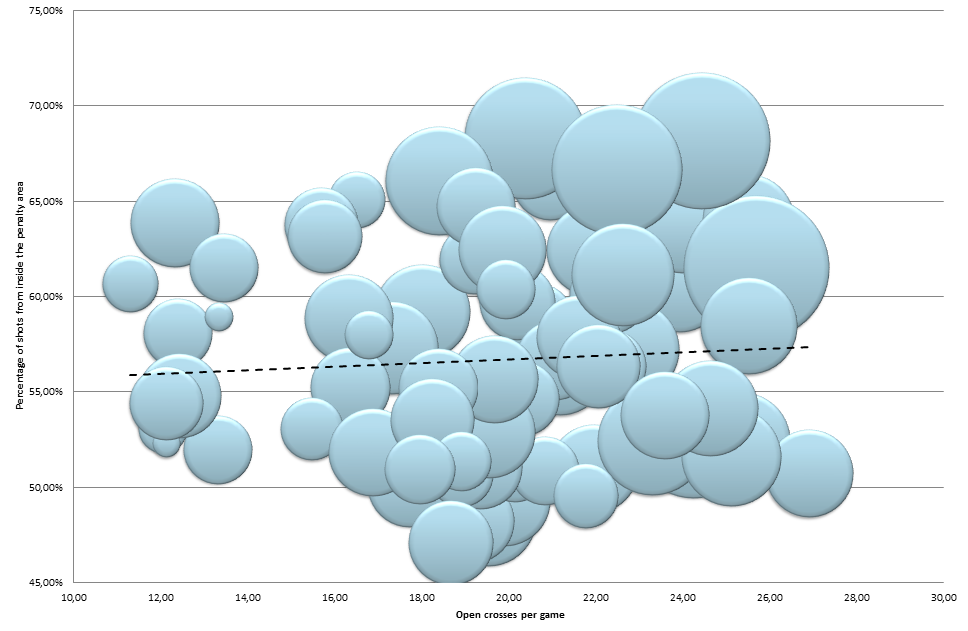
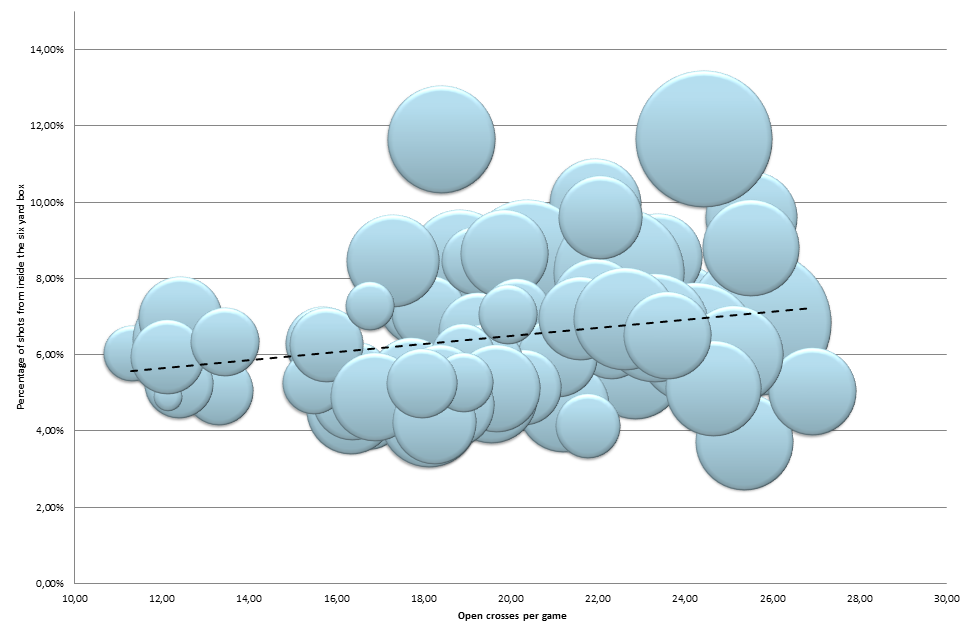
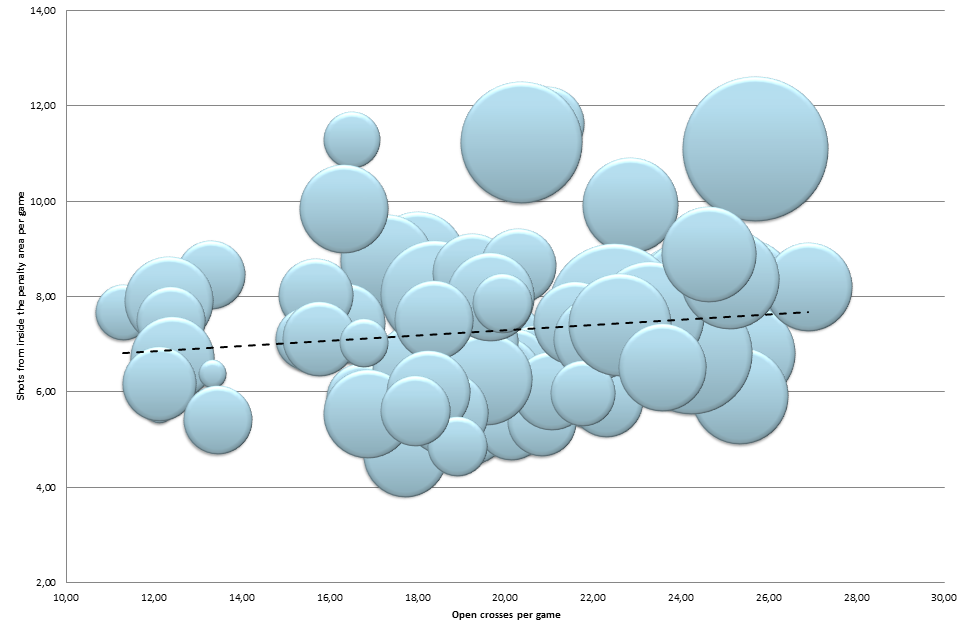
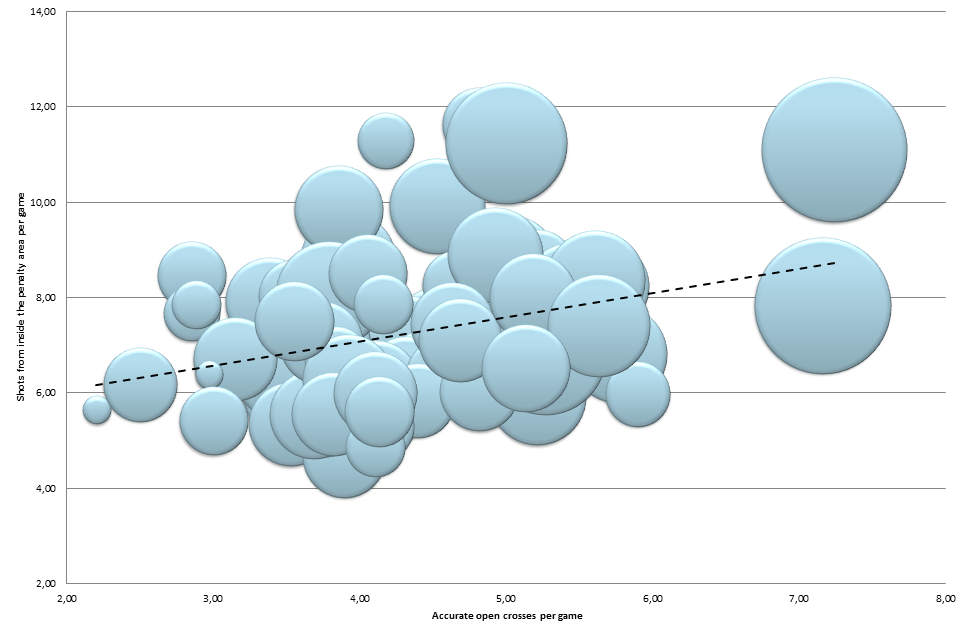
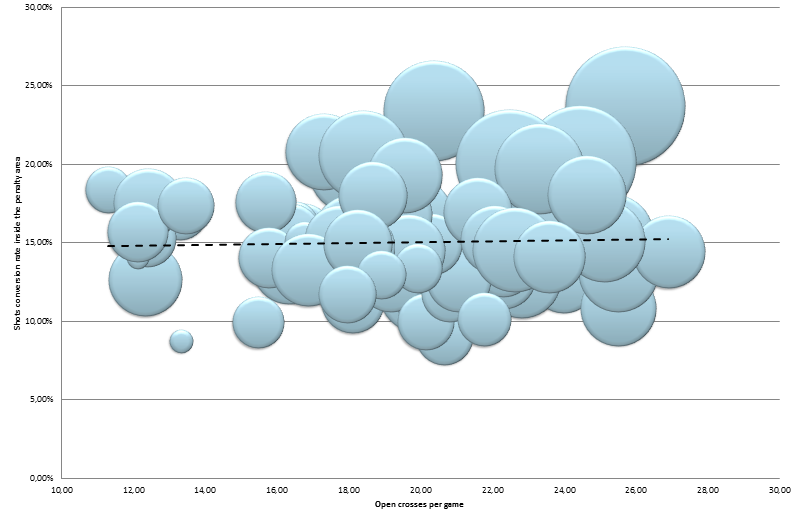
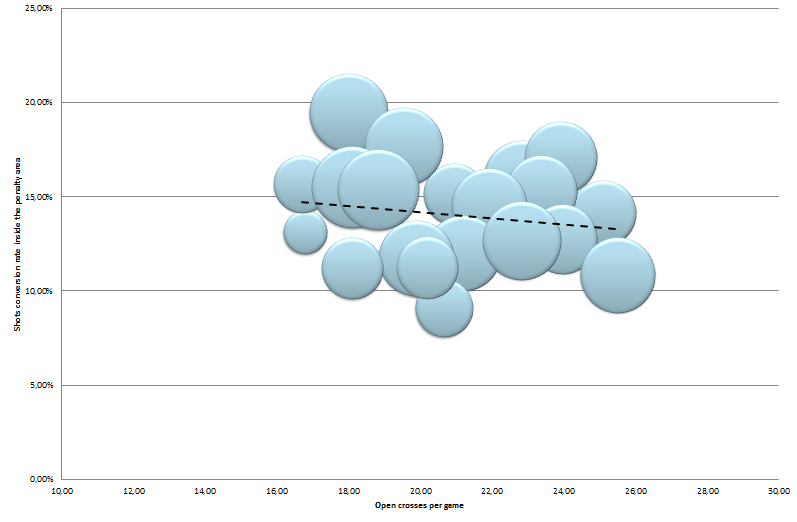
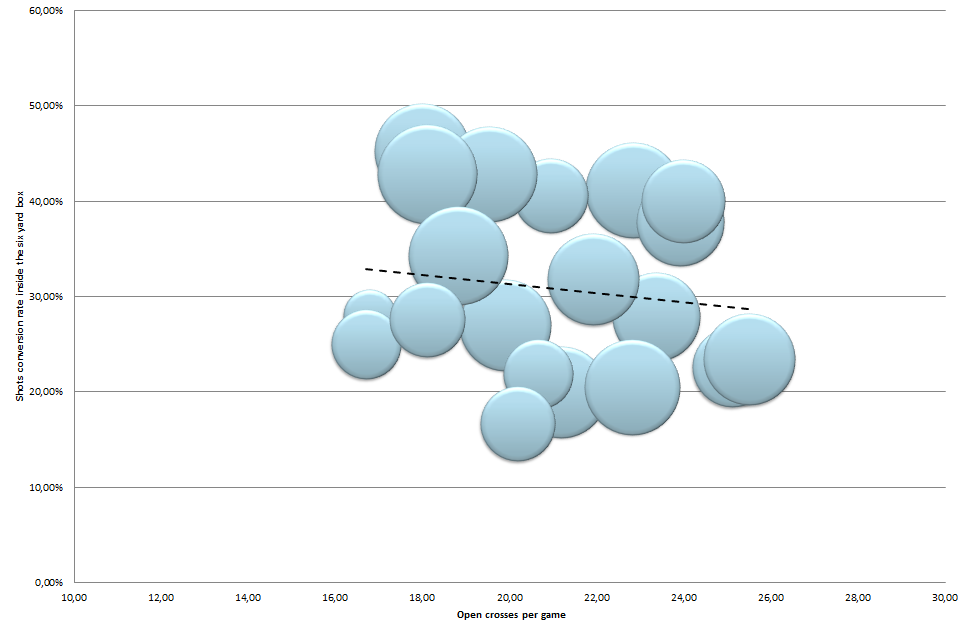
Keine Kommentare vorhanden Alle anzeigen